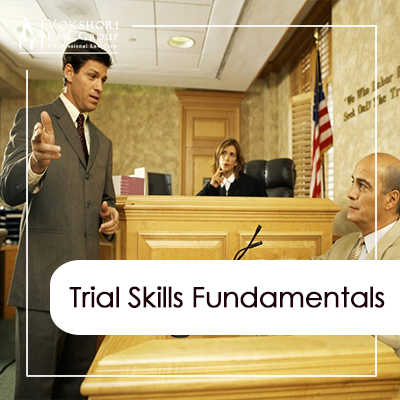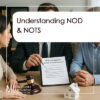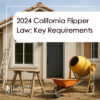
Cross-examination is a critical component of trial practice. Done skillfully, it can dismantle a witness’s credibility, shape the jury’s understanding of your case, and set the stage for a successful verdict. Done poorly, it can alienate the jury and reinforce the opposing party’s narrative.
This article distills key takeaways from a recent legal training focused on cross-examination and impeachment, integrating strategic insights with relevant California law, including Evidence Code § 773 and portions of the Code of Civil Procedure §§ 90–100, which govern trial testimony and procedure in both unlimited and limited civil cases.
1. Strategic Foundation for Cross-Examination
The Purpose of Cross-Examination
Cross is not about scoring technical points for an appellate record or grabbing sound bites. It’s about storytelling. You are guiding the jury toward your theory of the case using the opposing witness’s words. Under California Evidence Code § 773(a), a witness may be cross-examined on “any matter within the scope of the direct examination,” allowing you to challenge the credibility and substance of prior testimony. Your objective is to:
- Elicit admissions
- Undermine credibility
- Reinforce your narrative
Juror Psychology and Narrative Control
Jurors are your audience. They respond to clarity, consistency, and professionalism—but they are easily annoyed by repetition and theatrical behavior. For example:
- Avoid verbal tics such as ending every question with “correct?”
- Vary your phrasing: “Isn’t that true?” or “That happened, right?” keep your delivery fresh
- Think of cross-examination as building a compelling, digestible narrative, not a checklist
2. Techniques for an Effective Cross
Leading Questions and Control
Leading questions allow you to control the witness and maintain narrative flow. Avoid open-ended questions unless you are certain that no answer will hurt your case. Exceptions exist, such as when a witness cannot give a “good” answer no matter what they say.
Example:
In a case where a wealthy CEO fired low-wage workers without severance, the question, “Did you care at all?” left no good answer, either he admits to indifference or is exposed for hypocrisy.
Vary your language:
- “Isn’t that true?”
- “That happened, right?”
- “Didn’t you say…?”
These alternatives keep the cadence fresh and maintain juror attention.
Avoiding Common Mistakes
- Never ask a question you don’t know the answer to. The “one question too many” can unravel a well-executed cross.
- Don’t overload questions. Introduce one fact per question to avoid confusion.
- Avoid double negatives. Questions like “So you didn’t check, right?” risk ambiguous answers.
- Don’t just repeat direct testimony. You risk reinforcing emotional testimony in favor of the other side.
- Know when to stop. Prolonged impeachment can backfire—jurors may begin to sympathize with a thoroughly discredited witness.
Listening and Observing in Real-Time
Many attorneys are too focused on their outlines to notice when a witness says something helpful or inconsistent. Pay attention to:
- Shifts in tone or demeanor
- Coaching (e.g., glancing at counsel)
- Unusual behavior (e.g., a child witness crossing fingers before lying)
Commenting calmly on observable behavior (even at the risk of drawing an “argumentative” objection) can be effective. Jurors will become attuned to the issue and may penalize the witness for evasiveness or dishonesty.
Example: “I notice you’ve been looking toward your attorney before answering—are you waiting for direction?”
Even if an objection is sustained, you’ve now directed the jury’s attention to suspicious behavior.
3. Impeachment: Tools and Tactics
Types of Impeachment
Under California law and common trial practice, witnesses may be impeached using:
- Prior inconsistent statements (e.g., deposition testimony under Evidence Code § 1235)
- Bias or interest
- Inability to perceive or recall events
- Character for dishonesty (Evidence Code §§ 786–790, as applicable)
- Contradiction by other evidence
Practical Impeachment Strategies
- Be ready. Have your impeachment material (e.g., transcripts, documents) at hand and integrated into your outline.
- Plan for both answers. If unsure how the witness will respond, have “Impeachment A” and “Impeachment B” prepared.
- Cumulative impeachment. Multiple small mistakes—wrong times, dates, or physical descriptions—can undermine overall reliability.
- Use tone wisely. If a witness is simply confused or impaired (e.g., bad eyesight), avoid a hostile tone. A gentle, respectful approach is more effective and less risky.
Tailoring Tone Based on Witness Type
- Unreliable but honest witness: Focus on perception and memory without attacking character.
- Dishonest witness: Emphasize contradictions under oath. Jurors are particularly unforgiving of perjury.
- Jury Instruction on Dishonest: If you establish that a witness has lied, you may be entitled to a jury instruction based on CACI No. 107:
“A witness who is willfully false in one part of their testimony is to be distrusted in others.”
This is especially powerful when the lie is under oath. Jurors interpret this as a betrayal of trust, undermining the witness’s entire testimony.
4. Procedural Context and Legal Constraints
California Evidence Code § 773
- Subsection (a): Allows cross-examination on any matter within the scope of direct examination.
- Subsection (b): If a party’s interests are aligned with the party calling the witness, cross-examination is subject to direct rules (e.g., no leading questions).
Special Considerations in Limited Civil Cases
Under Code of Civil Procedure §§ 90–100, additional limitations apply:
- Discovery is restricted to 35 combined interrogatories, requests for admissions, and production demands (CCP § 94(a))
- Only one deposition per side
- Disclosure rules are strict under CCP §§ 96–97—undisclosed witnesses or documents may be excluded unless used solely for impeachment
Tip: Even impeachment evidence should be disclosed early when possible to preserve flexibility.
5. Presentation and Delivery
Managing Courtroom Presence
Your credibility is constantly on display.
- Avoid theatrical behavior or scolding the witness (e.g., “May I remind you that you are under oath?”).
- Maintain a neutral, calm tone, even when answers are false or frustrating.
- Be aware of your own facial expressions; jurors will notice your reactions and may judge you negatively for eye rolls or visible irritation.
Using Visual Tools at Trial
Jurors expect clear visuals and modern trial presentation. To help them follow:
- Use software like Trial Director, Sanction, or similar to display documents and highlight key clauses or inconsistencies.
- Avoid using Elmo projectors or handwritten annotations—these distract and feel outdated.
When jurors can see contradictions or clear language in a contract, your impeachment becomes more visceral and memorable.
Precision, Purpose, and Presence in Cross-Examination
Cross-examination is not a performance for its own sake, it’s a powerful storytelling device that, when executed strategically, can shape the jury’s perception of truth and justice. Through controlled questioning, careful listening, and well-timed impeachment, you can deliver a compelling narrative that advances your client’s case.
If you are preparing for trial and want to elevate your cross-examination strategy, our team at Vokshori Law Group is ready to assist.
For more information or to schedule a consultation, please contact Vokshori Law Group at (855) 855-2608 or visit www.VokLaw.com to learn more.






